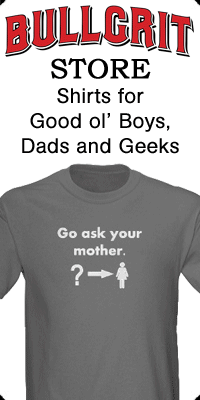A concept that I constantly see stated on various Internet message forums is that D&D3 combats take a long time to play out. Often, the unit of time given for D&D3 combats is “hour” or “hours.” And no one responds to these statements with any astonishment or surprise. It’s as if such statements are universally accepted fact. Now, the thing that astonishes me about this, is not that some people may experience ridiculously long (in real time) battles, but that it seems to be the common experience.
I used to play with a group that took extraordinary amounts of time to do anything. Combat was especially maddening for me. A single combat round took about 20 minutes to play out. The worst situation was a 2 hour battle against 5 normal skeletons. And we were 7th level!
Each Player took many minutes to decide exactly what he wanted to do in his round. The DM answered a barrage of questions for each potential action: “Is the BBEG looking at me? If I move over here, will he get an attack of opportunity? Can I sheath my bow and pull out my greatsword and charge him?” Etc. Players would move their mini on the battle grid, get told that movement draws an AoO, and then change their minds. They’d count out the movement from one point to another to get the exact measurements. They’d draw area of effects out on the battle mat before deciding whether to cast fireball.
I mean, it was absolutely absurd. And terribly frustrating for me. I can’t stand sitting on my hands for 20 minutes waiting for my one 6-second action to come back up. The DM had some really cool combat encounters, but what should have been fast and furious and exciting action bogged down into long, drawn out ordeals listening to all the Players calculate out every possible action for each Player in turn. It even took a ridiculous amount of time for someone to decide just to do another full attack.
Out of an 8 hour game session (every other week), we’d have 6 hours spent on 2-4 combats. Maybe a total of 10-15 rounds. After a couple combats, I started timing them with my watch. I noted and recorded the time, so my statements here are not guesstimates. I had hard evidence. I had to quit that group because I just couldn’t take it.
Since that group, I’ve played in two other groups (including my current). I’ve not experienced that problem again. My current group has had several combats that lasted over 20 rounds, and 1 to 1.5 hours real time. We’ve had one combat that lasted 55 rounds, but took less than 2 hours to play out.
Out of curiosity, I’ve been timing the combats in my game. I’ve not timed every combat, and some data (written on pieces of paper among all my DM notes) got lost, but I’ve timed enough to see the pattern for our group. Below is a sample of that data:
Party: 5 combatants of ~7th level
Combats:
3 monsters, EL7, 4 rounds, 17 mins (4.25 min/rnd – 32 seconds/combatant)
3 monsters, EL6, 3 rounds, 7 mins (2.33 min/rnd – 17.5 seconds/combatant)
7 monsters, EL6, 3 rounds, 7 mins (2.33 min/rnd – 17.5 seconds/combatant)
8 monsters, EL6, 2 rounds, 6 mins (3 min/rnd – 13.8 seconds/combatant)
Party: 6 combatants of ~7th level
Combats:
6 monsters, EL7, 4 rounds, 25 mins (6.25 min/rnd – 31.3 seconds/combatant)
1 monster (“respawned” 4 times), EL6, 3 rounds, 2 rounds, 2 rounds, 2 rounds, 6 rounds, 49 mins total (3.27 min/rnd – 28 seconds/combatant)
Party: 5 combatants of ~8th level
Combats:
5 monsters, EL11, 7 rounds, 28 mins (4 min/rnd – 24 seconds/combatant)
7 monsters, EL17, 9 rounds, 55 mins (6.1 min/rnd – 30.5 seconds/combatant)
Party: 4 combatants of ~6th level
Combats:
2 monsters, EL4, 2.5 rounds, 6 mins (2.4 min/rnd – 24 seconds/combatant)
12 monsters, EL7, 4 rounds, 16 mins (4 min/rnd – 15 seconds/combatant)
5 monsters, EL5, 5 rounds, 22 mins (4.4 min/rnd – 29.3 seconds/combatant)
Party: 5 combatants of ~7-9th level
Combats:
12 monsters, EL8, 2 rounds, 12 mins (6 min/rnd – 21.2 seconds/combatant)
12 monsters, EL8, 1 round, 3 mins (3 min/rnd – 10.6 seconds/combatant)
6 monsters, EL6, 2 rounds, 6 mins (3 min/rnd – 16.4 seconds/combatant)
6 monsters, EL6, 2.5 rounds, 7 mins (2.8 min/rnd – 14.3 seconds/combatant)
6 monsters, EL6, 5 rounds, 9 mins (1.8 min/rnd – 9.8 seconds/combatant)
8 monsters, EL7, 4.5 rounds, 11 mins (2.44 min/rnd – 11.3 seconds/combatant)
8 monsters, EL7, 3 rounds, 6 mins (2 min/rnd – 9.2 seconds/combatant)
3 monsters, EL6, 2 rounds, 7 mins (3.5 min/rnd – 26.3 seconds/combatant)
1 monster, EL7, surprise round, < 60 seconds (* min/rnd)
4 monsters, EL7, 5 rounds, 11 mins (2.2 min/rnd – 14.7 seconds/combatant)
3 monsters, EL6, 4.5 rounds, 7 mins (1.56 min/rnd – 11.7 seconds/combatant)
4 monsters, EL7, 5 rounds, 10 mins (2 min/rnd – 13.3 seconds/combatant)
4 monsters, EL7, 6 rounds, 16 mins (had to look up a rule, and had a brief argument) (2.67 min/rnd – 17.8 seconds/combatant)
4 monsters, EL7, 4.5 rounds, 9 mins (2 min/rnd – 13.3 seconds/combatant)
4 monsters, EL7, 6 rounds, 13 mins (2.17 min/rnd – 14.5 seconds/combatant)
********************************
Average mins/round for the total: 3.1 mins/rnd
3 mins/round = ~90 seconds for DM (who has far more to do), ~22.5 seconds per Player
My group (of 3-6 Players in the above data) consists of a mix of Players who absolutely know the rules (at least for their own character) and never need to reference the books or ask the DM (me) anything, to Players who don’t know what BAB means and have to look up a rule every time (regardless of how many times they’ve already looked it up) and require the DM’s attention and guidance constantly, and all those variations in between.
I don’t think my Players know that I’m timing the combats. I’ve not kept it a secret, but we’ve never discussed it, and I don’t think they care. So there’s no timer hanging over anyone’s head about their turn in the combat. This time tracking is just something I do and never talk about with them. We could go even faster if I hounded everyone about it, but everyone seems fine with the current speed of combat play.
So this makes me wonder: Is my group the anomaly, that our combats go quickly in real time? Is it really the common experience that combats take hours to play out in other people’s games?
Looking at the average in the data, a combat would have to go over 20 rounds to break the 1 hour real time mark. And a 20-round combat is usually quite the epic event.
What is going on in everyone else’s group that combats take hours to play out? I’m genuinely confused about this.
[Edit: Having thought about it for a while, I wonder if people are terribly misjudging the passage of time. Most people can’t tell time length very well based on feel. Check this by asking a friend to time for you. They tell you when to start, and then you tell them when you think one minute is up. Then they tell you how much time has actually passed. It gets much harder to judge two minutes, five minutes, etc.
This is why many service industries (like restaurants) use time coding on tickets/ receipts. “I’ve been waiting 20 minutes for my steak.” But the ticket shows it’s only been 6 minutes.]
Bullgrit
bullgrit@totalbullgrit.com






 Categories:
Categories: 





